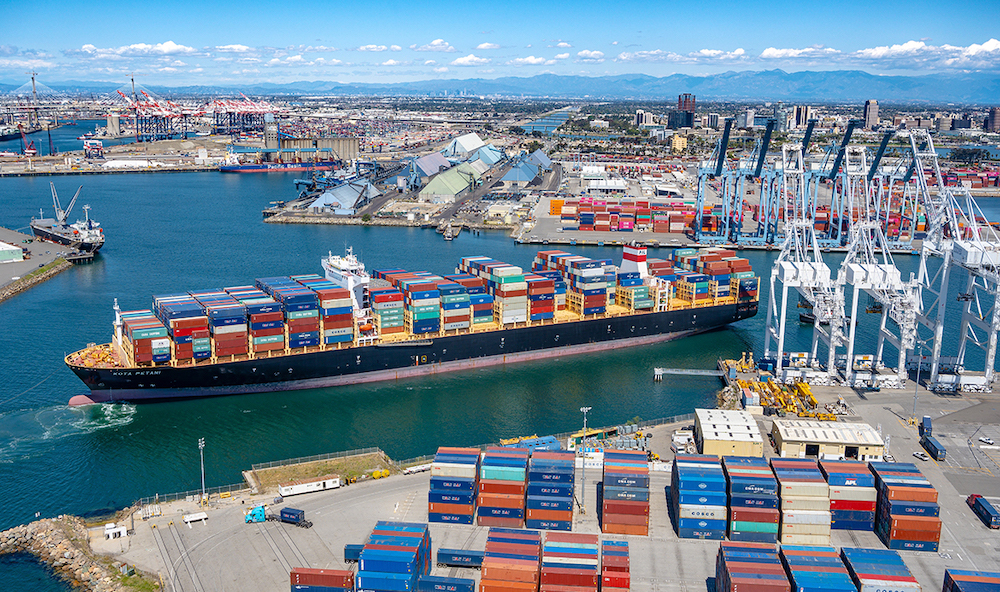Copyright splash247

You might have thought that, after a pre-tariff early peak season back in July, the liner freight market would now be subsiding into a deglobalised recession. October would in this case have surprised you. The Freightos global average freight rate per forty foot box did indeed bottom out at $1,546 on October 10, its lowest level since November 2023. But it then rose 8% and 13% in the following two weeks to reach $1,872 per feu on October 24. Even more surprising is the increase in the freight rate from China to the US west coast. This bottomed out at $1,431 on October 10, then rose 18% and 20% in the next two weeks to reach $2,027. The reason is not a sudden change of heart in the Trump administration, or an unexpected increase in US demand for Chinese exports, tariffs included. Instead the increase comes down to supply management. Liner companies have been stripping tonnage and capacity from the transpacific route, maintaining the quantum of available teu-days at levels below those offered in September. This, it seems, has been enough to push up freight rates. The same management technique applies to the China – US east coast service, on which rates bottomed out at $3,015 per feu on October 10 then rose by 2%, then 14% in the next two weeks. As of October 24 the rate assessment was $3,500 per feu – still not back to the $3,967 reported at the end of September, but enough for most liners to break even on the voyage as utilisation rates push up over 90%. To gauge the real level of trans-pacific trade, one might consider the per-feu rate on the US to China voyage, which is down 11% so far in October to $359, having peaked most recently on June 13 this year at $460 per feu. Whatever Trump might have to say about trade with China, the data suggest that Beijing ain’t buying it. What’s more, the recent supply management has not been enough to push spot rates on the transpacific route to the US above long-term contract rates. Peter Sand, chief analyst at liner research outfit Xeneta, explains: “The average long term rate is almost on par with spot rates on transpacific trades, which in isolation should be a good position for shippers.” Furthermore, on October 14, the US introduced its fees for Chinese owned ships, while threatening further tariff increases on imports from China. If Chinese exporters continue to seek alternative markets outside North America, liner companies will be forced to cut even more capacity from transpacific schedules, even as their fleets swell with newbuilding tonnage often ordered exactly for this trade. Supply management has also cut teu capacity from Asia to Europe schedules, with the Freightos Baltic freight rate assessment from China to northwest Europe rising from a low of $1,747 per feu on October 10 to $2,267 on October 24, a return to mid-September levels. Rates on China to the Mediterranean rose 1% then 6% in the two weeks to October 24, from a low of $2,131 on October 10 to $2,278. Ships are still taking the long route round Africa rather than brave the Suez Canal route, despite the fragile ceasefire in Gaza, as Houthi paramilitaries remain trigger-happy in the Gulf of Aden and Red Sea. These higher spot rates are still below the one year contract rate as reported by Xeneta’s Sand who adds: “The spot rate spike in mid-October on European-bound fronthauls should be good news for carriers, but they won’t be celebrating too much because it is not enough to bring it above the long term rates. This plays into the hands of shippers who must be considering pushing contract negotiations back into Q1 next year. A long term market higher than a short term market is an extremely powerful negotiating position for shippers – why would they lock into a new 12 month contract at those levels?” Liners will have to cut capacity further if they are not to be whipped in forthcoming contract rate negotiations, with around a quarter of Asia-Europe volumes being shipped on long-term contracts. On the Europe to US voyage, rates are reported to be steady at $2,269 per feu, unchanged since early September, while the rate on the reverse route remained steady for the fortnight to October 24 at $797 per feu. One of the major operators, Atlantic Container Line, has complained that its vessels have been reclassified as roros by US Customs and Border Protection, as around 10% of their cargo is Ro-Ro or outsized project cargo. This has resulted in an unexpected $34m increase in port fees, which ACL says is unsustainable and will drive them out of business or into redeployment of their services. Rates from Europe to the east coast of South America sit at $797 per feu, barely changed in October, though a seasonal downturn has pushed rates from Europe to the west coast of South America 12% lower over four weeks to $2,480 per feu as of October 24.



